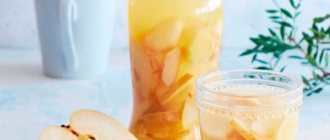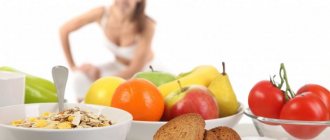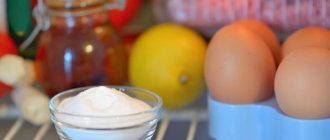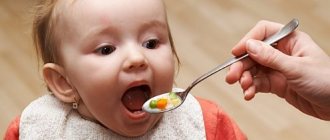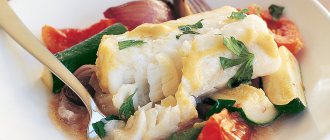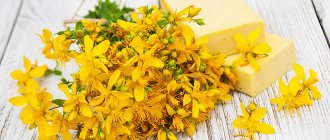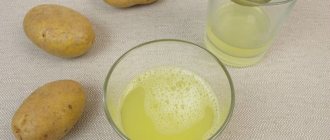General diet rules
At risk:
- refusal of breakfast;
- tight diet;
- frequent snacking on unhealthy foods such as fast food, chocolate;
- regular meals;
- preference is given to fried foods and fat.
Carcinogens in fried foods can cause cell mutation. Fats become the building blocks of so-called false polyps. These are plaques stuck to the walls of the gallbladder. True polyps have a trunk and consist directly of organ cells.
To protect your gallbladder, you need to follow the principles of proper nutrition, exercise regularly and monitor your weight.
At the beginning of development, polyps do not appear in any way; they are accidentally discovered during a screening examination. If this occurs, treatment is necessary, which is always based on a diet for gallbladder polyposis.
A patient with polyps must follow certain rules when eating:
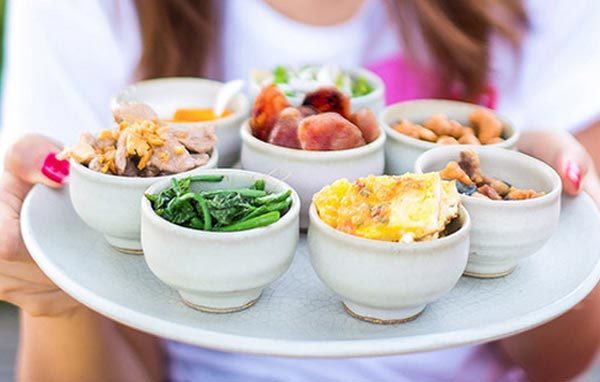
- consumes 2000 kilocalories per day when leading an inactive lifestyle and 2600 kilocalories per day when doing a lot of physical exercise and playing sports.
- Expect meals with 200 milliliters of clean, still water.
- Eat the fragments. Meals should be 5-6 times a day, at equal intervals.
- Reduce serving size to approximately 200 grams. This diet prevents stagnation of bile in the bladder. This prevents the formation of false polyps. Fats can get into sediment only as a result of stagnant, condensed secretion.
- Eat not cold or hot, but warm. A decrease in temperature leads to contraction of the bile walls. The spasms prevent the liver's secretion reservoir from emptying.
- Drink at least 1.5 liters of fluid daily.
- Limit salt intake to one teaspoon per day. Vinegar and all mildly flavored spices are prohibited.
- Do not eat salty, fatty, fried, spicy or pickled foods.
- Cook mainly by steaming. You can also eat it cooked and baked.
During treatment, the rules must be strictly followed. The duration of therapy usually exceeds 2 months. After this, doctors also recommend adhering to the principles of proper nutrition. If you decide to give up your diet, you must follow it gradually. Otherwise, the body will be in a state of stress, and a relapse of polyposis may occur.
Prohibited Products
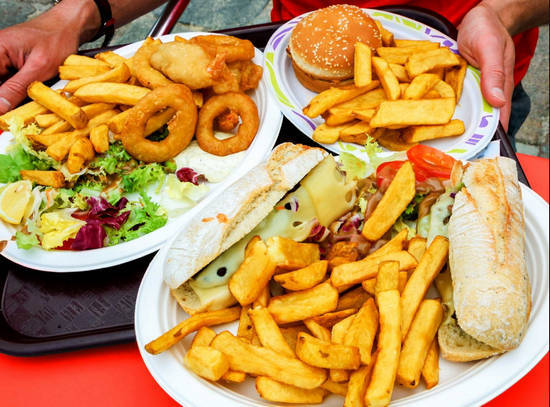
Avoiding fat is especially important if stones have formed in the bladder along with polyps. They are usually formed from precipitated cholesterol. Polyps should remove egg yolk and all refined foods. They are loaded with cholesterol. As bile increases and displaces water, the secretion thickens.
The diet for gallbladder polyposis should be varied.
You have to imagine because they are excluded from the diet:
- boiled broth;
- confectionery;
- confectionery and baked goods with cream;
- onions, garlic, radishes, spinach, sorrel and beans;
- corn and its flour;
- sour cream;
- ice cream;
- Retail juices;
- Lemonade and other sweet carbonated drinks;
- Mayonnaise, ketchup and mustard;
- Chocolate and cocoa;
- Coffee;
- Jars, pickled and pickled;
- Alcoholic drinks.
The listed products are heavy on the digestive tract and can cause flatulence, a feeling of heaviness in the stomach after eating, irritation of the mucous membranes of the gastrointestinal tract and, in particular, the gallbladder.
Authorized products
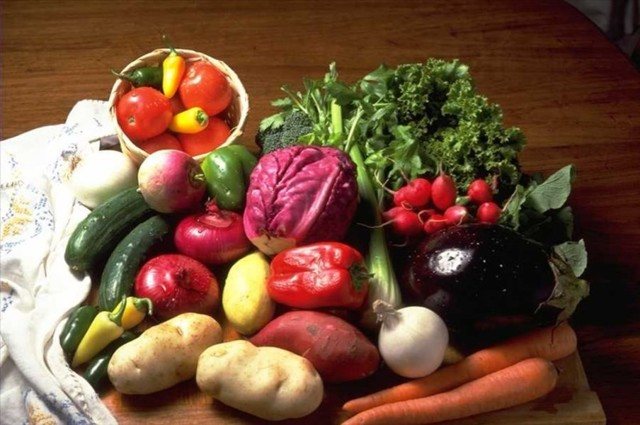
Allowed:
- Carrots, beets, all types of cabbage, zucchini, eggplants. It is recommended to prepare side dishes from them. It is better to give up potatoes or reduce their consumption to a minimum. Tubers contain starch, which slows down the metabolic process.
- Tomatoes, avocado, peppers, fresh celery.
- Salad and possible vegetables.
- Chicken eggs. It is advisable to eat only egg whites, but once a week you can allow yourself a whole boiled egg or steam an omelet.
- Without fatty kefir and cottage cheese.
- Without fatty meat and fish.
- Bread (rye or wheat), but only baked goods from yesterday. You can't eat fresh bread.
- Dried fruits.
- Cereal porridge (buckwheat, wheat, pearls, oatmeal), cooked in water or skim milk
- Berries and fruits of acid-free varieties. It is advisable to replace them with sweets. Kisses, compotes and horses can also be made from berries.
- Vegetable oils. Their quantity should not exceed 2 tablespoons per day.
- Honey, jelly, natural jam and pastille.
- Cloves, thyme, cinnamon and bay leaves can be used as spices.
If the adenoids in the gallbladder are causing discomfort and pain, the food is boiled and ground (it can be mashed into a puree).
It is important to chew your food gently while eating. Large pieces in the gastrointestinal tract put a strain on it and provoke active production of bile. People diagnosed with gallbladder polyposis should have a balanced and varied diet. When preparing food, you are allowed to use only those products that are included in the list of permitted products.
Protein omelet is suitable for breakfast.
To cook it you have to take it:
- chicken egg whites (3 pieces);
- 2─ 3 tablespoons of milk;
- a small amount of butter;
- a pinch of salt.
eggs beaten with milk and spices; The dish is steamed. If the omelette is cooked in a frying pan, it should be simmered rather than fried. To prevent it from burning, add a little oil. You can replace it with avocado pulp.
As a snack, you can make oatmeal and vegetable soup.
You will need this:
- 2 medium potatoes;
- 2 tablespoons oatmeal;
- small carrots;
- tablespoons of vegetable oil;
- a little salt.
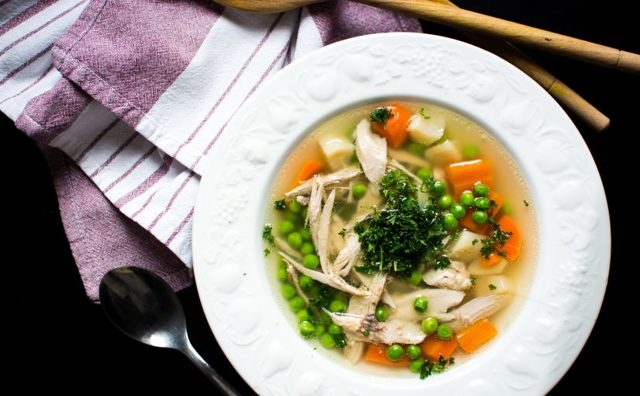
As a main course, you can prepare low-fat fish with carrots.
To do this you need this set of products:
- half a kilogram of fish (hake, pike perch);
- 2 medium sized carrots;
- half a kilogram of small onions;
- a piece of dill;
- a piece of bread made from wheat flour;
- 30 grams of hard cheese;
- a little salt.
The fish should be cut into pieces, each of which is slightly salted. Peel the carrots and grate them on a coarse grater. Onions and dill should be finely chopped. Make bread crumbs.
Pour a little water into the baked goods until the bottom is covered by a half inch. Arrange the food in layers: vegetables, fish, cheese, herbs, breadcrumbs. The fish should be baked in the oven at 180 degrees for 40 minutes. For dessert, use low-fat cottage cheese with applesauce and bananas.
It is needed for cooking:
- 200 g of cottage cheese (fat content should not exceed 5%);
- ripe banana;
- sweet apple;
- 50 milliliters of low-fat kefir or natural yogurt without additives;
- spoon of sugar.
Mashed potatoes are made from apple. To do this, small pieces of fruit are poured into water and boiled until tender. Then the apple is grated and mixed with sugar. Cottage cheese, kefir and banana are whipped with a mixer. The resulting mixture is placed in cream and chilled applesauce is poured on top.
If regular feeding errors are made, the pathology develops further. In difficult cases, the patient needs to undergo surgery to remove the gallbladder along with polyps.
By following the principles of proper nutrition and following a diet, you can stop the growth of polyps in the gallbladder.
Prohibited Products
Despite the large number of permitted foods, when treating polyps in the stomach you need to completely exclude from your diet:
- corn and all dishes prepared from this product;
- milk, cheese and other high-fat fermented milk products;
- alcoholic drinks, soda and strong coffee;
- confectionery products (other than those mentioned earlier);
- hot spices and herbs;
- some types of fruits and vegetables, such as tomatoes, garlic, tangerines and lemons.
Diet for polyps in the gallbladder: what you can eat, menu examples
Polyps in the gallbladder are called growths that cover the mucous layer of the organ. New growths of any kind can be treated with surgery. Cholesterol types are an exception. After surgery, the patient must follow a diet.
Basic nutritional recommendations
A diet for polyps should be prescribed by a specialist. Following a certain diet leads to a rapid recovery of the patient.
According to Pevsner, patients who have gallbladder polyps removed eat diet chart number five.
The purpose of this table is to reduce the stress on the digestive system caused by the consumption of certain foods, thereby reducing the number of calories.
It costs the patient at least two months to eat the diet table. The duration of the diet may vary depending on the specialist’s prescription and the severity of the consequences.
The number of dishes should be increased and the usual portion reduced. The reason for this is the need to reduce the load on the biliary organ, stomach and intestines. Establish frequent meals - at least 5 times a day.
Eating smaller portions of food should not interfere with the body. A certain amount of protein and fat. It is worth ending the diet and gradually switching to a normal diet. A sudden jump will disrupt the functioning of the digestive system.
Singer's nutritional table number five requires the exclusion of animal and vegetable fats from the normal diet. Sugar should be replaced with glucose of natural origin.
Dietary principles - the absence of the same menu for every day. The patient should follow a varied and balanced diet. This will allow him to lead a normal life with active brain activity. Eating carbohydrates in normal amounts will help.
Recommended Products
For gallbladder diseases, the diet should be changed to improve the patient's condition. To eliminate unpleasant symptoms, a strict diet is proposed that will allow a person to feel normal. Foods that have a positive effect on human recovery include vegetables
- . As a side dish, beets with carrots, eggplants, broccoli, cauliflower with Brussels are used. Potatoes are not included on this list due to the starch they contain. This component has a negative effect on metabolic processes. Carrots and cabbage, peppers, tomatoes and celery are used fresh.
- Greenery. Rocket, lettuce, dill with coriander, parsley and basil are recommended. Salads from fresh vegetables are an opportunity to get the required amount of vitamins and minerals.
- milk and dairy products. A cake with kefir and milk should have a low fat content. Foods rich in fat complicate the digestion process.
- Porridge. Pearls and barley, oatmeal and buckwheat are necessary to replenish the body with complex fibers.
- Legumes. These include lentils and beans. Their use has a positive effect on the patient’s body, replenishing it with the necessary components for normal life.
- Bread. A representative of this category should not be fresh. A patient who has had a tumor removed from a bile duct should take care of himself and avoid dietary stress. The bread consumed should be selected from the “Rye” category. White bread should be consumed the day after purchase.
- Meat fish. Meat products and fish should be consumed in fat-free varieties. Chicken, fillet, turkey, veal are permitted types of meat. Hake fillet was recommended from fish to patients with polyps.
- fruit. Consumed fruits replace sweets. Finally, the diet does not imply the presence of sweets or sweets in the diet. Allowed fruits include apricots with peaches, plums with cherries and raspberries, and mangoes with bananas.
Prohibited Products
The disease imposes some restrictions on nutrition. Taking the following types has a negative impact on health and recovery.
- Alcoholic drinks. Drinks containing even a small dose of alcohol negatively affect the intestinal microflora and gallbladder of the patient, who has to work harder.
- Intoxicating drinks. This includes beer and kvass. Their effect on the intestines is manifested in the organ that produces bile and in other organs involved in digestion.
- Carbonated drinks. Carbonated water and sweet carbonated drinks are strictly contraindicated. Alkaline water also falls into this category.
- Coffee, strong tea. Black tea, coffee. Instant poppy seed coffee is specially prohibited.
- Fried and fatty foods.
- Pork, lamb. These types of meat are classified as fatty. Treatment of polyps requires a low-calorie diet. Oils, fats. These include vegetable oil, butter, margarine. Do not use butter or products containing margarine (puff pastry, baked goods).
- Sweets. Desserts, sweets and chocolate can be dangerous for a sore bladder. It is especially difficult for the organ to process chocolate.
- Spices. Restrictions apply, in particular, to spices and salt. Salt intake should be limited to two grams.
- Salt. Such products are prohibited.
- Pickled food. The ban on these products is due to the vinegar contained in the marinade.
- Canned food. Regardless of the type of canned food, their consumption does not come down to anything. This also includes jams and marmalades.
In addition to the foods listed, all other foods with a heavy stomach are prohibited. The intestinal mucosa is too sensitive after illness. Products that cause irritation are excluded from the diet. The diet should start with a small amount of water.
Diet for polyps in the gallbladder
With the knowledge of forbidden and allowed foods, you can easily master your diet. The patient's diet should be gentle and promote rapid recovery. If the patient follows the doctor’s instructions, the flow of bile in the organ will improve, and the symptoms of swelling and spasms will be eliminated.
Diet menu
The recovery day consists of five meals. Below is an example menu.
The patient's first breakfast consists of oatmeal, supplemented with fresh berries, and a casserole with cottage cheese. For dessert, prepare a banana smoothie or rice pudding. All can be drunk with lightly brewed tea with skim milk.
For second breakfast, a light vegetable salad is served. An alternative is baked apple or pear.
For lunch there is vegetable soup cooked with water rather than broth. Complete the soup with steamed chops. You can replace it with chicken fillet. Instead of tea, prepare dried fruit compote.
Today is like a second breakfast. Consists of a salad of vegetables or fruits. You can make jelly or replace it with dried fruit compote.
For dinner, it is best to eat boiled or cracked vegetables. Complement your dinner with any dairy product.
Recipes for individual dishes
- Vegetable soup with oatmeal. To prepare the soup, you need to take some potatoes and carrots. Since it is prepared without frying, chopped carrots and potatoes are thrown directly into the soup. Add a few spoons of oatmeal 5 minutes before the end. Season the dish with salt, sunflower oil and fresh herbs.
- Carrot puree soup. This soup is made from vegetable broth. You need half a liter to cook. Place two finely chopped carrots in boiling water, add salt and sprinkle with a small piece of butter. Make cream soup with a blender. Fill the dish with croutons.
- cottage cheese paste. For the pate, mix one hundred grams of low-fat cottage cheese with sugar and a spoonful of sour cream. This option is also suitable in salted form. Instead of sugar, add salt and finely chopped fresh dill.
- Egg white omelette. For this dish, you need to separate the egg white and yolk into three eggs. Mix the resulting three whites with a whisk and a few spoons of milk. Prepare omelettes using a steamer. Fry the omelette in a frying pan with a small piece of butter, as this is not enough.
What is allowed to eat?
If a patient is diagnosed with polyps in the stomach, the menu will need to add food such as:
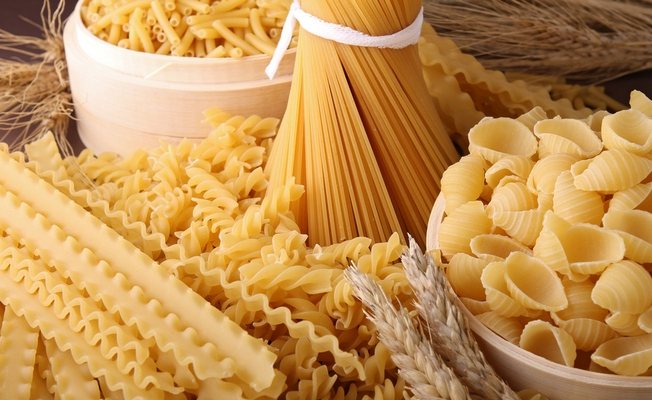
People with this disease are allowed to cook pasta.
- soups cooked in vegetable or weak meat broths;
- cereals;
- pasta;
- lean types of fish and meat;
- fermented milk products;
- black currant;
- marmalade;
- vegetables;
- legumes;
- dill and parsley;
- pears;
- eggs (no more than 2 pieces per day).
You are allowed to drink compotes, jelly, and still mineral water.
Nutrition for polyps in the gallbladder: daily diet
Gallbladder diseases are a fairly common pathology. For example, polyps in this organ occur in 6% of people (most often in women over forty years old).
As is the case with other pathologies of this internal organ, effective therapy always includes compliance with certain dietary rules and dietary restrictions.
Before we engage in proper nutrition for gall bladder polyps, we must understand what the disease is and what causes it.
Causes of polyposis in this organ and diagnosis of the disease
True polyps are called adenomas in medicine, and the reasons for their development are not fully understood. However, about 90 percent of new formations in the gallbladder are so-called pseudopolyps, the basis of which is high cholesterol.
Such formations occur when bile in the bladder stagnates and cholesterol precipitates into tiny crystals (cholelithiasis begins in the same way). These processes are typical for cases of malnutrition and impaired motor function of the gallbladder and its bile ducts.
The main method for diagnosing this pathology is ultrasound examination of the abdominal organs.
According to its results, cholesterol clusters are clearly visible. Mobile accumulations are called biliary concretes (stones), and if such a formation is attached to the wall of the bladder - cholesterol polyps.
It should be noted that the symptoms of true polyposis differ from the external manifestations of cholesterol pseudotumors, since the latter manifest themselves in the form of cholecystitis (inflammation of the walls of the gallbladder).
The clinical picture is manifested by pain in the right leg, nausea, bitterness in the mouth, heartburn, and so on. Often, polyps in the bladder lie next to stones, which are also formed due to their precipitated cholesterol. In some cases, polyps are the result of an inflammatory process caused by irritation of the mucous membrane of this organ.
To clarify the diagnosis and form of polyposis, you can use endoscopic ultrasound, which is performed through the stomach and gives more accurate results.
Polyps in the gallbladder - treatment methods
If the size of these tumors and their number make it possible to avoid surgery, conservative therapeutic methods are used, including drug therapy with drugs that help dissolve cholesterol clusters and prevent their further growth. Bile is also used to eliminate stagnant bile. With concomitant cholecystitis (inflammation of the gallbladder), anti-inflammatory drugs from the group are used.
Drug therapy is a fairly lengthy process (sometimes taking several years) and is always used in combination with a special diet.
If conservative methods do not give the desired result, the gallbladder is usually completely removed (an operation called cholecystectomy).
However, such an operation does not eliminate the cause of the pathology, so even if this organ is absent, nutritional counseling should be continued.
There are also methods for removing polyps while preserving the organs (which are used very rarely), but the consequences of their use can be unpredictable due to the violation of the integrity of the bladder lining.
How should you eat if you have a polyp(s) in your gallbladder?
Nutritional needs for this pathology (as well as for other diseases of this organ) are prescribed in a diet called “Table 5”. This imposes restrictions not only on diet, but also on nutrition.
The main requirements of such a diet are as follows:
- fractions of food that should be consumed frequently (five to six times a day) at regular intervals in small portions;
- food should only be warm, since both hot and cold foods negatively affect the digestive system;
- total calorie intake should be between 2000 and 2.500;
- proteins (for example, fats) should be about 70 grams, carbohydrates from 300 (preferably) to 400 (maximum) grams;
- the menu should be agreed with the attending physician or nutritionist, since the diet may vary depending on the current condition of the patient;
- daily fluid intake - two liters;
- before meals, it is recommended to drink a glass of water or herbal decoction based on herbs;
- food can only be prepared in three ways: Steaming, baking or cooking (deep frying should never be done);
- For better absorption of food, it is better to either grate the food or grind it in some other way.
Also read: What does pyriform gallbladder mean?
The purpose of this food is to promote normal digestion and facilitate the excretion and drainage of bile. In addition, this diet is an excellent prevention of numerous liver and gallbladder diseases.
Approximate menu for the week
The diet should consist of at least six meals.
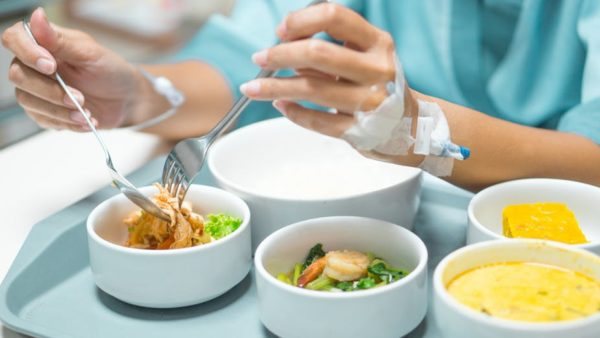
- Monday. For breakfast, porridge with water, crackers or toast, a glass of compote. For lunch, vegetable puree soup, boiled fish with buckwheat or mashed potatoes, tea. For dinner, pasta with chicken breast or vegetable stew, kefir. Between meals, you can eat baked fruit or cottage cheese casserole, drink herbal tea.
- Tuesday. An omelette and tea will do in the morning. For lunch you can eat chicken soup with croutons, vegetable stew, jelly. For dinner, steam cutlet with vegetable salad, tea. You can have an afternoon snack with fermented baked milk with biscuits or fruit salad.
- Wednesday. Buckwheat with milk for breakfast and tea. Lunch is enough with puree soup, rice with lean meat and washed down with compote of berries or dried fruits. Dinner of rice and boiled fish, tea. Have enough fruit to snack on or eat a vegetable.
- Thursday. Milk porridge and a small sandwich in the morning. Lunch of soup and steam cutlet, herbal tea with gingerbread. You can have a baked potato for dinner and wash it down with kefir. Snacks from vegetable salads, prunes, and dried apricots are required.
- Friday. Rice porridge, a glass of tea with biscuits. For lunch, any lean soup and vegetable salad with a piece of lean meat. For dinner, buckwheat porridge with milk, rose hip decoction. Snacks throughout the day from milkshakes and bread.
- Saturday. Boiled eggs, banana puree, green tea for breakfast. For lunch, chicken soup, potato casserole, compote. Dinner can consist of a fish cutlet with rice and boiled vegetables. You can have a snack with kefir with breadcrumbs, baked apple with honey.
- Sunday. light breakfast of oatmeal, tea and biscuits. Lunch of vegetable soup and steamed cutlet with buckwheat. For dinner, boiled breast with pasta. For an afternoon snack, yogurt or fermented baked milk with fruit.
The menu can be modified. The main thing is to eat small and often. Food must be freshly prepared, every product must be natural. Prepared dishes should be cooled to a comfortable temperature for eating. Heat treatment is required.
Polyps are usually removed surgically, so diet is part of the preparatory stage for surgery. It is imperative to follow it, otherwise the risk of complications increases.
Should I delete
There is a comprehensive classification of gastrointestinal neoplasms, however, when assessing the prognosis for a patient, gastric polyps are usually divided into two types:
- with a low risk of malignant transformation;
- tumor, or polyps of the “precancerous” type.
It is possible to determine which variant the formation in the stomach of a particular patient belongs to only through laboratory examination of the biopsy material obtained during FGDS. Symptoms - nausea, vomiting, poor appetite, bloating, discomfort or abdominal pain - are not specific and may indicate the presence of a polyp, as well as a number of other pathologies of the gastrointestinal tract and even other functional systems.
